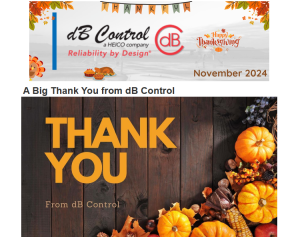This is part one of a three-part series on how system design engineers can weigh the benefits of custom vs. COTS power supplies.
By Robert Richardson, Senior Design Engineer, dB Control
When sourcing low- and high-voltage power supplies for either military or commercial applications, system design engineers must choose between commercial off-the-shelf (COTS) products or units built to custom specifications. However, misunderstandings abound regarding the cost of each option — in terms of both initial price and total cost of ownership — as well as delivery timelines, ease of integration, and real-world performance.
Understanding the pros and cons of COTS versus custom power supplies helps engineers make timely, defensible decisions about the products they implement in their projects. This knowledge is particularly consequential in military applications, where size, weight, power, and cost (SWaP-C) requirements usually are inflexible.
A commercial application is more likely to be set up in a controlled environment, where operating space and power draw are not as critical. Form factors tend to be typical (standardized, even). Conversely, military applications often require unique form factors to ensure proper fit on the platform, precise weights to maximize flight longevity, and strict center of gravity requirements, as well as near-infallible reliability to preserve operation in scenarios where human lives are at stake. Each application is different; what remains constant is that power supply parameters already have been figured into the engineer’s design.
COTS Often Falls Short Of Its Promise
COTS power supplies generally are faster to procure than custom power supplies, but redesigning and customizing packaging to accommodate COTS designs may cause delays in the form of multiple restarts or customer requests for waivers. Consider that the integration task begins by determining and designing the external circuity required for operation and protection of the power supply. Next, a PCB must be designed to integrate the external circuity before thermal management solutions are analyzed and designed. Finally, designers must find a way to mount the whole assembly into its intended enclosure.
Purchasers are limited to predefined voltage/power/temperature/performance ranges, as well as form factors and heat management. A one-size-fits-all power supply often forces system cooling and mechanical layout to be designed around the power supply, and the power supply usually has to be overrated (size/cost) for the application. Even if the unit’s predefined ranges fall within the application’s needs, they are not optimizing SWaP-C.
Additionally, the data sheets and reference designs accompanying most COTS products (outlining their performance parameters) can be imprecise or convoluted. For example, heat dissipation usually is overlooked (or deliberately buried) in the data sheets, making implementation seem straightforward even though achieving the promised performance often requires significant analysis and design work.
This is because the numbers on the front of those data sheets represent best-case scenario — analogous to the mileage sticker on the window of a new vehicle. The COTS power supply can conceivably achieve the stated performance, but perhaps it has to be kept at a constant cool temperature or operate under a precise load. The data sheet’s last page might contain a curve hidden amongst a hundred others that indicates operating at a higher-than-optimal temperature leads to only half the stated output power noted on the front of the data sheet.
In terms of price, based solely on raw materials and components, COTS always will be less expensive up front than a custom power supply. However, after additional design time and multiple iterations of the final assembly to hash out any bugs, custom designs surpass COTS as the better value overall — particularly in military and defense applications.


